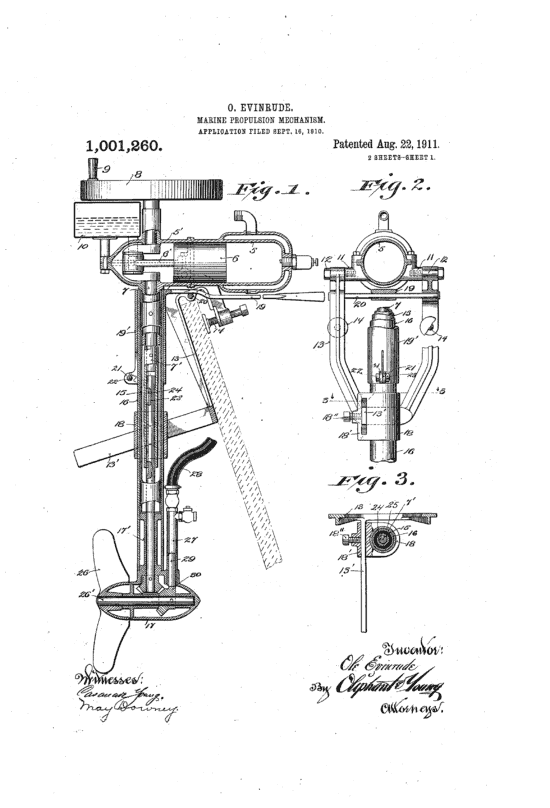It's an Engine!
The term ‘engine’ originates from the Latin ingenium–the root of the word ingenious, and was first used to describe ‘siege engines‘. Much later, in 1712, Thomas Newcomen developed his steam-powered ‘atmospheric engines‘. All subsequent devices which use heat to perform mechanical work have been known as ‘heat engines‘.

Outboards obviously take in fuel, which they use to produce heat, and perform mechanical work, so they are definitely engines. So why don’t more people call them engines?
It's a Motor!
Outboards have been called ‘outboard motors’ from the very beginning. The first one was a small electric unit constructed by Gustave Trouvé in 1880. This unit contained an electric motor, and is likely the source of the term ‘outboard motor’. The first outboard propulsion unit produced in significant volumes was the Waterman Porto-Motor, further popularizing the term ‘outboard motor’.

The only problem with this term is that many ‘outboard motors’ contain an engine, not a motor! Well, actually, this is where things get tricky, as most people treat the terms ‘engine’ and ‘motor’ as synonyms, and ‘motor’ is commonly used to describe ‘engines’ in British English (by non-engineers). So does that mean we should follow historical convention and call them ‘outboard motors’?
Maybe it's Just an Outboard...
So the system definitely has an engine, and you might be able to (correctly) say it houses a motor, but what we’re talking about here is really a complicated system, which comprises of:
- an engine (or motor if you’re so inclined)
- transmission (gears)
- steering mechanism (tiller or electric controls)
- drive mechanism (propeller or pump-jet)
- cooling system
- casing/housing (cowling and leg)
- fuel tank (sometimes)

The outboard isn’t just a device for converting fuel into mechanical work, it’s a complete propulsion system on its own! And if you really think about it, the only thing preventing the outboard from being a self-propelled watercraft is buoyancy; it just needs help floating!
Well, What is It?
GTC has no official position on this contentious subject, but this author has a very controversial view. It’s just an outboard. It’s got an (outboard) engine in it, and it may also have a (starter) motor, but if you’re talking about the whole system, it’s just an outboard. We should probably call them ‘outboard propulsion systems’ or something to that effect, but that’s not very catchy, so it seems like ‘outboard’ is the best option.